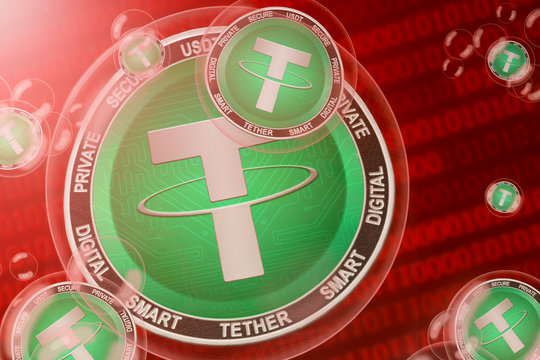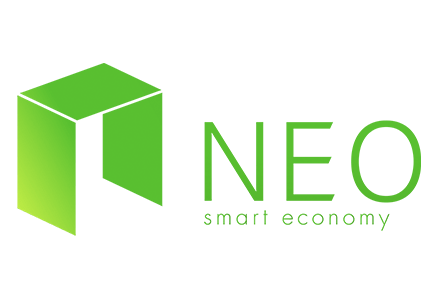
In the rapidly evolving world of cryptocurrency, few projects have captured both the imagination and attention of investors quite like Terra (LUNA). This comprehensive guide explores Terra’s groundbreaking approach to algorithmic stablecoins, its revolutionary dual-token system, and the dramatic events that led to one of crypto’s most significant collapses in May 2022. Whether you’re a crypto newcomer seeking to understand what made Terra special or an experienced investor looking to grasp the lessons from its rise and fall, this article provides everything you need to know about Terra, LUNA, and the subsequent emergence of Terra Classic (LUNC). From its innovative technology and real-world applications to the collapse that wiped out $45 billion in market capitalization, we’ll examine how Terra aimed to bridge traditional finance with blockchain technology and what its legacy means for the future of decentralized finance.
Key Takeaways
- What is Terra Luna: Terra Luna was a revolutionary blockchain protocol featuring algorithmic stablecoins and a dual-token system where LUNA absorbed volatility to maintain stablecoin price stability, reaching a peak market cap among the top 10 cryptocurrencies before its collapse.
- The Innovation: Terra’s algorithmic approach eliminated the need for traditional collateral backing, using a sophisticated burn-and-mint mechanism between LUNA and Terra stablecoins (like UST) to maintain price pegs through market arbitrage incentives.
- Real-World Impact: The protocol achieved significant adoption through partnerships like Chai payments app and the Terra Alliance, encompassing 45 million users and $25 billion in gross merchandise value across 10 countries.
- The Collapse: In May 2022, coordinated attacks and massive withdrawals triggered UST’s depeg, creating a death spiral that saw LUNA crash from $119.51 to near zero and wiped out $45 billion in market value within one week.
- Current Status: Following the collapse, the original chain became Terra Classic (LUNC) with community-driven governance and burn mechanisms, while a new Terra 2.0 launched with fresh token distribution to affected holders.
- Investment Lesson: Terra’s story demonstrates both the innovative potential and inherent risks of algorithmic stablecoins, highlighting the importance of understanding DeFi protocol mechanics and risk management in cryptocurrency investments.
Table of Contents
What is Terra Luna (LUNA Coin)?
Terra is a blockchain protocol and payment platform designed for algorithmic stablecoins that combines the price stability of fiat currencies with the censorship-resistance and efficiency of cryptocurrencies. Created in 2018 by Terraform Labs, Terra represents one of the most ambitious attempts to solve the stablecoin trilemma through innovative technology rather than traditional collateral backing.
LUNA serves as Terra’s native staking token, functioning as the backbone of the entire ecosystem by absorbing price volatility from Terra stablecoins. Unlike conventional stablecoins backed by fiat reserves, Terra’s algorithmic approach uses LUNA as a variable counterpart to maintain price stability through a sophisticated burn-and-mint mechanism. This dual-token system enables users to spend, save, trade, or exchange Terra stablecoins instantly while LUNA holders receive staking rewards and governance power over the protocol.
The Terra ecosystem quickly expanded into a comprehensive network of decentralized applications, creating stable demand for Terra stablecoins and increasing LUNA’s value through its deflationary mechanics. At its peak, Terra was among the top ten largest cryptocurrencies by market capitalization, with LUNA reaching an all-time high of $119.51 before its dramatic collapse in May 2022.
Difference Between Terra and LUNA Coin
Terra and LUNA represent two complementary components of the same revolutionary ecosystem, each serving distinct but interconnected functions. Terra refers to the entire blockchain protocol and its family of algorithmic stablecoins that track the price of various fiat currencies. These stablecoins, named according to their fiat counterparts—such as TerraUSD (UST), TerraKRW (KRT), and TerraSDR (SDT)—maintain their pegs through algorithmic market mechanisms rather than traditional collateral backing.
LUNA, on the other hand, is the native governance and staking token that powers the Terra protocol’s stability mechanism. It serves as the variable counterpart to Terra’s stable assets, absorbing volatility by expanding and contracting in supply as needed. When demand for Terra stablecoins increases, LUNA is burned to mint new stablecoins, reducing LUNA’s supply and increasing its price. Conversely, when stablecoin demand decreases, Terra tokens are burned to mint LUNA, increasing LUNA’s supply while maintaining stablecoin price stability.
This symbiotic relationship made LUNA’s value directly tied to the adoption and success of Terra stablecoins. The more Terra stablecoins were used across the ecosystem, the more valuable LUNA became, creating a powerful incentive structure that drove the protocol’s rapid growth before its eventual collapse.
Terra Luna History and Founders
Terra’s journey began in January 2018 when Do Kwon and Daniel Shin co-founded Terraform Labs in Seoul, South Korea, with an ambitious vision to drive rapid adoption of blockchain technology through a focus on price stability and usability. Kwon, who previously founded Anyfi and worked as a software engineer for Microsoft and Apple, took on the role of CEO, while Shin brought his experience from co-founding major South Korean e-commerce platform Ticket Monster (TMON) and startup incubator Fast Track Asia.
The founders conceived Terra as a solution to cryptocurrency’s volatility problem, recognizing that price stability was essential for mainstream adoption. Their innovative approach combined the borderless benefits of cryptocurrencies with the day-to-day price stability that users expected from traditional fiat currencies. This vision attracted significant backing from prominent investment firms including Arrington Capital, Coinbase Ventures, Galaxy Digital, and Lightspeed Venture Partners, raising over $200 million in funding.
Terra’s mainnet officially launched in April 2019, introducing the world to its revolutionary algorithmic stablecoin protocol. The project quickly gained traction through strategic partnerships, most notably with Chai, a South Korean mobile payments application that processed transactions via the Terra blockchain network. By February 2019, the Terra Alliance had grown to include e-commerce platforms from 10 countries, representing 45 million users and $25 billion in gross merchandise value.
The protocol’s most significant milestone came with high-profile partnerships like the $38.15 million five-year sponsorship deal with the Washington Nationals Major League Baseball team in February 2022, which rebranded the team’s club and lounge as the “Terra Club.” However, this peak of mainstream recognition would soon be followed by the project’s dramatic collapse just months later.

Terra Luna Key Features
1. Algorithmic Stablecoin Protocol
Terra’s revolutionary approach to stablecoins rested on its algorithmic market module, which maintained price stability through sophisticated arbitrage incentives rather than traditional collateral backing. This system enabled users to always trade $1 worth of LUNA for 1 UST and vice versa, creating automatic price correction mechanisms that restored peg stability through market forces.
2. Proof-of-Stake Consensus Mechanism
The protocol utilized a proof-of-stake consensus mechanism based on Tendermint, powered by the Cosmos SDK, which enabled fast transaction processing and high scalability while maintaining security through validator networks. Only the top 130 validators could participate in consensus, ensuring network efficiency while maintaining decentralization.
3. Dual-Token Expansion and Contraction System
Terra’s innovative dual-token mechanism provided unprecedented scalability, designed to maintain price stability regardless of market size, volatility, or demand. During expansion periods when stablecoin demand increased, the protocol incentivized burning LUNA to mint Terra stablecoins, reducing LUNA supply and increasing its value. During contraction periods, the reverse occurred, maintaining the delicate balance between token pools.
4. Multi-Currency Stablecoin Support
The ecosystem supported multiple stablecoin denominations tracking different fiat currencies—including USD, KRW, and SDR—all existing within the same liquidity pool. This provided users with unprecedented flexibility for international transactions while offering instant settlements, minimal transaction fees, and borderless payments with full blockchain transparency and immutability.
Terra Luna Crypto Use Cases
Payment Integration with Chai
Terra’s most prominent real-world application was the partnership with Chai, a South Korean mobile payments application that processed purchases through the Terra blockchain network. Each transaction on participating e-commerce platforms incurred a 2-3% merchant fee, creating sustainable revenue streams while providing users with faster, more affordable payment processing compared to traditional payment systems.
DeFi Ecosystem Applications
The Terra ecosystem flourished with comprehensive decentralized applications utilizing its stablecoin infrastructure. Anchor Protocol emerged as a leading lending platform, offering investors who deposited UST an attractive 19.45% yield, while Mirror Protocol created financial derivatives that “mirrored” traditional listed stocks, enabling blockchain-based equity market exposure.
Terra Alliance Commercial Network
The protocol found extensive adoption through the Terra Alliance, which encompassed e-commerce platforms from 10 countries representing 45 million users and $25 billion in gross merchandise value. This network created consistent demand for Terra stablecoins in real-world commerce, demonstrating the protocol’s potential to bridge traditional business with blockchain technology while supporting various dApps including Astroport, Spectrum, and RandomEarth.
LUNA Coin Functions and Utility
Network Security and Staking
LUNA served as the protocol’s native staking token, enabling holders to participate in network security by delegating tokens to validators who recorded and verified blockchain transactions. Staking LUNA provided holders with regular rewards from transaction fees while contributing to network security and decentralization, with validators earning proportional rewards based on their total stake.
Governance and Protocol Control
The governance function empowered LUNA holders to participate in protocol development through democratic proposal submission, voting, and implementation processes. This included parameter changes, community pool spending decisions, and major protocol upgrades, with voting power proportional to staked holdings to ensure those most invested in network success had the greatest development influence.
Algorithmic Stability Mechanism
LUNA’s most innovative function was serving as the variable counterpart to Terra’s stable assets through the mint-and-burn equilibrium system. LUNA absorbed price volatility by automatically adjusting supply in response to stablecoin demand, creating direct correlation between stablecoin adoption and LUNA value appreciation while functioning as the base currency for transaction fees and oracle price reporting rewards.
Terra Luna Crash: What Happened to LUNA Coin
The Terra ecosystem’s dramatic collapse in May 2022 represents one of cryptocurrency’s most significant and well-documented failures, wiping out nearly $45 billion in market capitalization within a single week. The catastrophic events began on May 9, 2022, when TerraUSD (UST) started losing its crucial $1 peg to the US dollar, triggering a death spiral that would ultimately destroy both UST and LUNA.
The collapse likely originated from coordinated attacks on Terra’s liquidity pools, combined with massive withdrawals from the Anchor Protocol in the days preceding the depeg. As UST fell below $1, the protocol’s algorithmic mechanism automatically began minting new LUNA tokens to burn UST and restore the peg. However, the unprecedented scale of selling pressure overwhelmed the system’s stabilization capacity, creating a hyperinflationary spiral where massive amounts of new LUNA tokens flooded the market.
LUNA’s price plummeted from its all-time high of $119.51 to virtually zero, while UST crashed to as low as $0.044, completely failing to maintain its dollar peg. The Luna Foundation Guard (LFG), established to provide additional stability through Bitcoin reserves worth approximately $2.4 billion, proved unable to halt the collapse despite deploying their cryptocurrency holdings in desperate stabilization attempts.
On May 13, Terraform Labs temporarily halted the Terra blockchain in response to the catastrophic price action, but the damage was irreversible. The failure of Terra’s algorithmic stablecoin model demonstrated the risks inherent in systems lacking traditional collateral backing, particularly when facing coordinated attacks or extreme market stress. The collapse sent shockwaves throughout the cryptocurrency industry, leading to increased regulatory scrutiny and skepticism toward algorithmic stablecoin projects.

Terra Luna Classic (LUNC) Future
Following the devastating collapse, the Terra community approved governance proposal 1623 on May 25, 2022, which outlined the creation of a new Terra chain while preserving the original network as Terra Classic. This historic decision effectively forked the blockchain, with the new Terra 2.0 launching on May 27, 2022, featuring a fresh LUNA token distribution, while the original chain continued operating under the Terra Classic banner with LUNA rebranded as LUNA Classic (LUNC).
The new Terra 2.0 distributed 1 billion LUNA tokens according to a complex airdrop formula based on pre-depeg and post-depeg snapshots, allocating tokens to original LUNA holders, UST holders, and various ecosystem participants. The distribution included 30% to the community pool, 35% to pre-depeg LUNA holders, and smaller percentages to UST and aUST holders, with most allocations subject to vesting schedules to prevent immediate selling pressure.
Terra Classic (LUNC) continues operating as a community-driven blockchain with several important developments. The network has implemented a burn mechanism on all on-chain transactions, permanently removing LUNC tokens from circulation to address the massive supply inflation that occurred during the collapse. This deflationary pressure, combined with ongoing community governance initiatives, aims to gradually reduce the token supply over time.
The Terra Classic ecosystem maintains active development through community-led initiatives, with projects like Astroport, Spectrum, and other decentralized applications continuing to operate on the network. However, the protocol no longer attempts to maintain algorithmic stablecoins, focusing instead on serving as a general-purpose blockchain platform where LUNC functions as the native governance and transaction token.

Terra Luna vs Competitors
Terra competed primarily within the stablecoin sector against established projects like MakerDAO’s DAI, Circle’s USDC, and Tether‘s USDT. Each represented fundamentally different approaches to achieving price stability, with Terra pursuing pure algorithmic mechanics while competitors relied on overcollateralization or fiat reserves.
Terra’s Key Advantages: Terra offered superior capital efficiency compared to DAI’s overcollateralized model, requiring no excess collateral to maintain stability. Against centralized stablecoins like USDC and USDT, Terra provided true decentralization and transparency with all mechanics visible on-chain, eliminating reliance on traditional banking relationships and offering 24/7 accessibility without regulatory restrictions.
Competitive Limitations: However, Terra’s algorithmic approach proved less resilient during extreme market stress, as demonstrated by UST’s catastrophic depeg when overcollateralized and centralized alternatives maintained their pegs. The collapse ultimately highlighted that while Terra’s innovation represented important DeFi progress, pure algorithmic stability may be insufficient during coordinated attacks or severe market conditions, with each stablecoin model involving distinct risk-reward trade-offs.
How to Buy Luna Classic (LUNC)
Step-by-Step Guide on MEXC:
- Create Account: Visit MEXC website and complete registration with email verification
- Complete KYC: Submit identification documents for account verification and enhanced security
- Deposit Funds: Add USDT to your MEXC wallet
- Find Trading Pair: Navigate to trading section and search for LUNC/USDT pair
- Place Order: Choose market order for immediate purchase or limit order for specific price
- Secure Storage: Transfer LUNC to personal wallet or keep in MEXC’s secure platform storage
MEXC offers competitive fees, high liquidity, 24/7 customer support, and user-friendly interface suitable for both beginners and experienced traders seeking sophisticated trading tools.
Conclusion
Terra (LUNA) represents one of cryptocurrency’s most significant cautionary tales, demonstrating both innovative potential and inherent risks of algorithmic stablecoin protocols. From groundbreaking dual-token mechanisms promising capital-efficient stability to catastrophic collapse wiping out $45 billion, Terra’s journey offers crucial DeFi lessons.
The project’s initial success through partnerships like Chai showed genuine promise for bridging traditional commerce with blockchain technology, while sophisticated arbitrage mechanisms represented significant stablecoin design innovations. However, Terra’s collapse exposed fundamental vulnerabilities in purely algorithmic stability approaches, particularly during extreme market stress, highlighting the importance of robust safeguards in DeFi protocols.
Terra Classic (LUNC) continues as a community-driven experiment in blockchain governance, while Terra’s legacy underscores the critical importance of understanding DeFi protocol mechanics, sustainable tokenomics, and risk management in algorithmic financial systems for the cryptocurrency industry’s future development.
Join MEXC and Get up to $10,000 Bonus!
Sign Up


